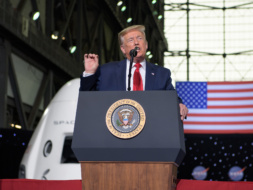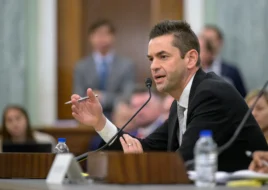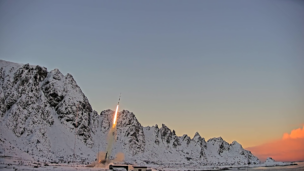The House Armed Services Committee held its 14+ hour markup of the fiscal 2026 National Defense Authorization Act this week.
The bill, sent by the committee to the full House, includes a handful of big ticket space items—, including formalizing a program to help troops get their hands on commercial satellite imagery, and supporting the Golden Dome missile defense initiative.
But buried in the hundreds of amendments approved by the committee, lawmakers asked for a number of reports or briefings on many space topics. While these requests are not tied to big budgets or market moving programs, they do signal lawmakers’ questions or priorities—and give a hint of when we might see answers from the administration.
Eyes in the skies: Combatant commands must report to DoD on their remote-sensing data needs annually for the next five years beginning on Feb. 1, under an amendment introduced by Rep. Seth Moulton (D-MA). The provision, which was adopted by the committee, would require DoD officials to share:
- How many remote sensing requests they made of the NGA over the prior two years.
- How quickly requests were met—and whether any were denied.
3, 2, 1: Lawmakers also added $2.5M to the bill to procure a liquid rocket engine for helping Air Force Academy cadets learn about rocket propulsion.
Ask politely: The NDAA always contains report language—or congressionally mandated (but not legally binding) asks of the DoD that the military generally fulfills. Some of the asks, which request information by a March 1 deadline, include:
- A request backed by Rep. Don Bacon (R-NE) for the Space Force to brief Congress on the aging Satellite Control Network, including when a replacement will come online.
- A briefing requested by Rep. Pat Ryan (D-NY) on the radiation risks faced by non-hardened sats beyond LEO.
- A rundown from service leaders on space domain awareness initiatives, put forward by Rep. Mike Turner (R-OH).
- A tech roadmap for DoD’s use of nuclear electric propulsion for in-space maneuvering, including plans for a test mission in orbit by 2030, also introduced by Turner.
- A plan for how DoD would respond to simultaneous attacks on space and undersea infrastructure, also from Turner.
- A briefing on defense applications of VLEO, requested by Rep. Jeff Crank (R-CO).
- A review of how DoD can use full-motion video for tracking objects and behavior in orbit, backed by Rep. Salud Carbajal (D-CA).
- A report on commercial PNT services—and how they could be relied upon if GPS was degraded, from Rep. Rob Wittman (R-VA).




